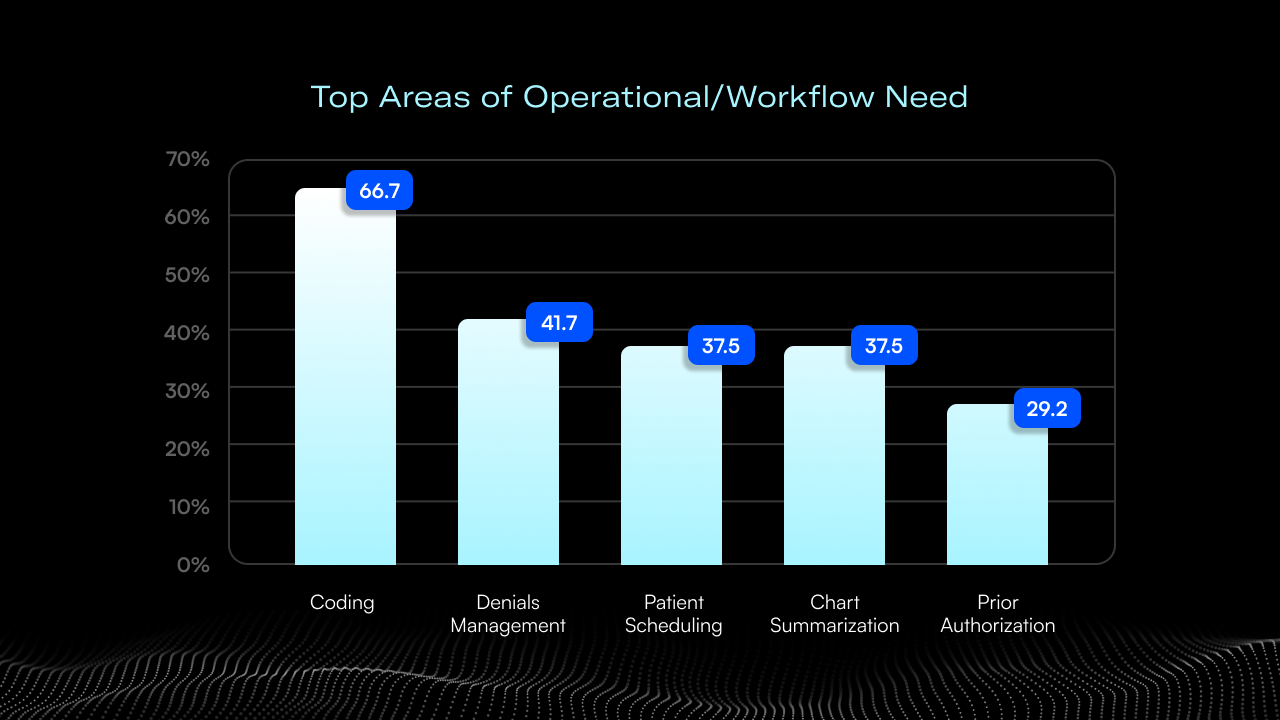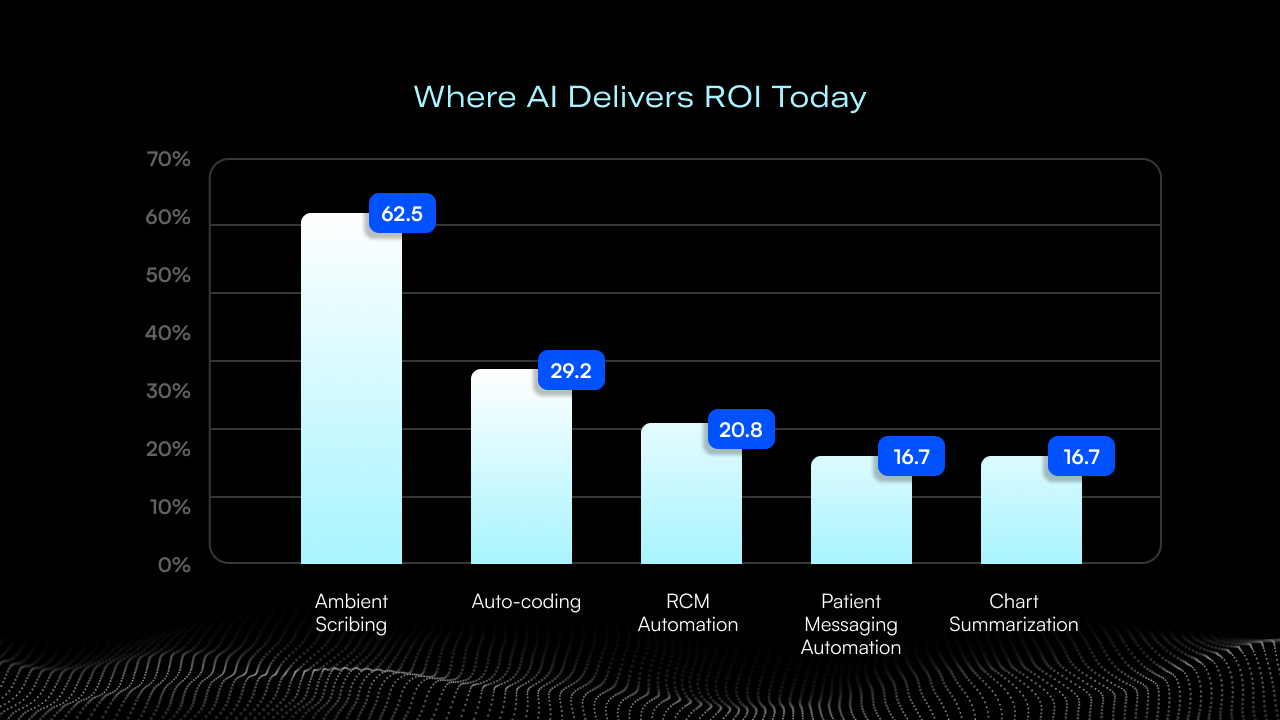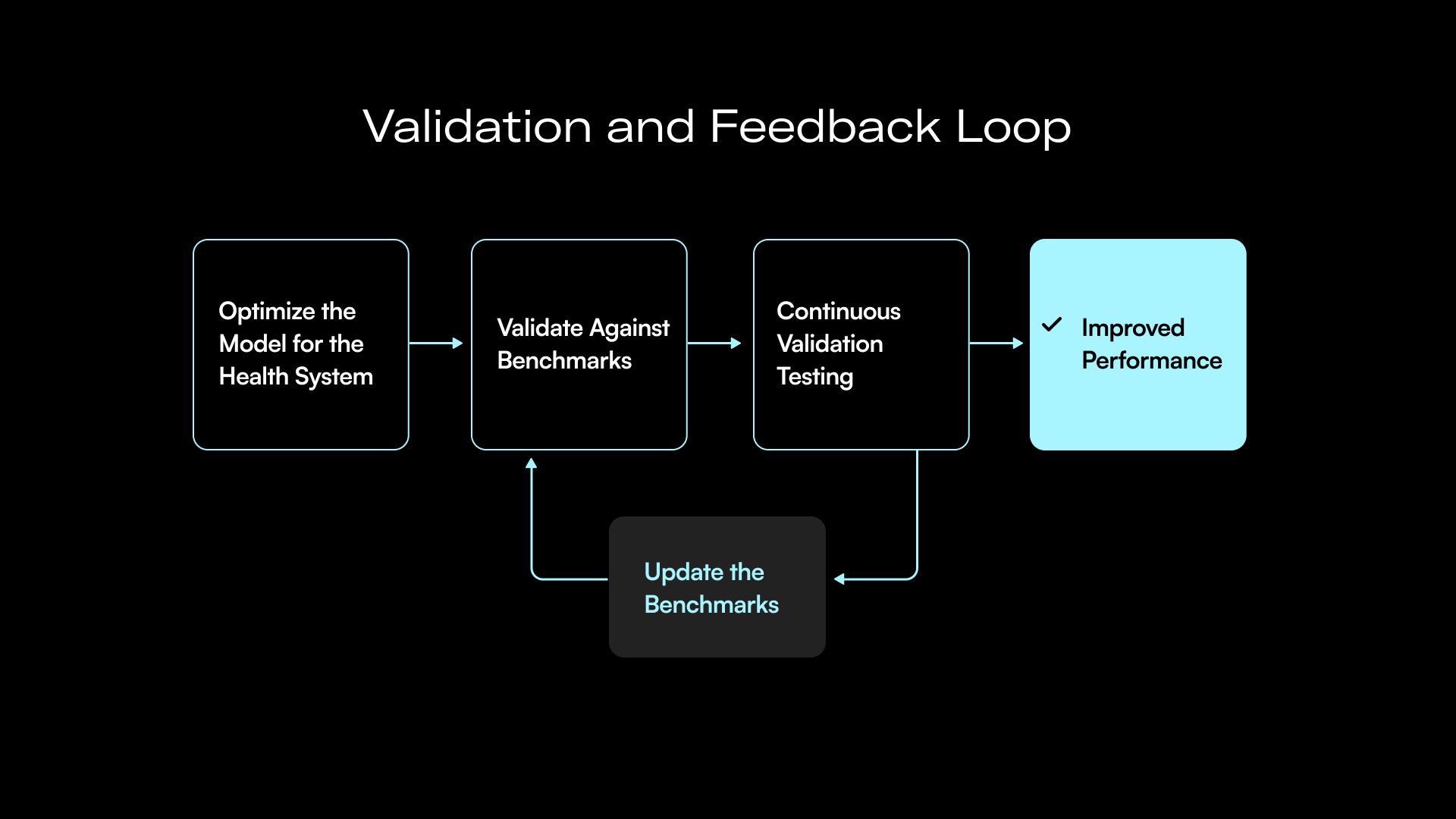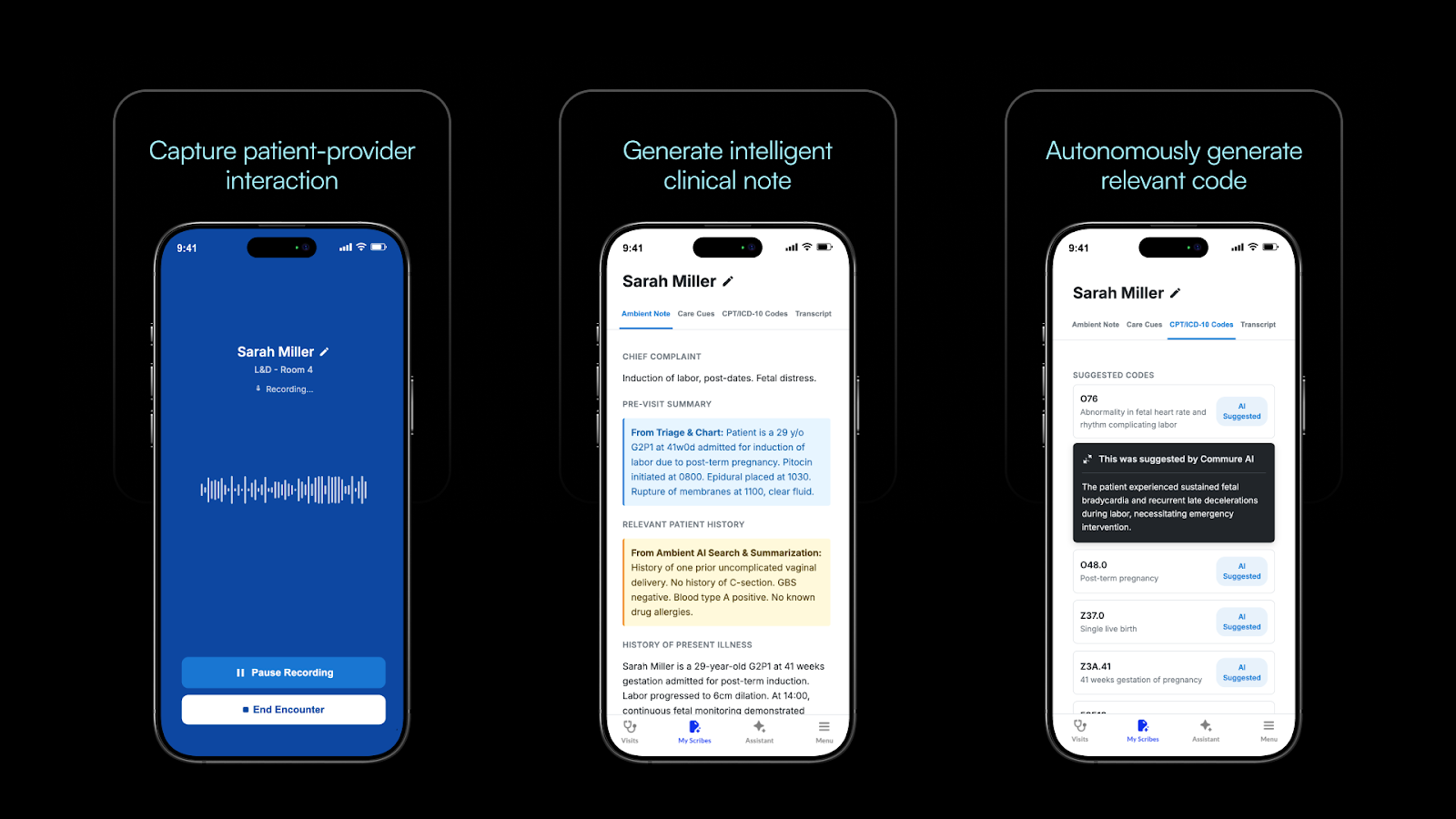Clinical teams are overwhelmed by the bloated tech stacks meant to support them. A 2023 survey of health system clinicians and CIOs found that 55% of respondents use between 50 and 500+ software solutions to run their healthcare operations. Innovations in healthcare tech that were supposed to streamline care have instead turned into a fragmented maze of point solutions, each solving a narrow problem while creating broader inefficiencies across the health system.
At the May 2025 Commure Nexus event, Ian Shakil (Chief Strategy Officer at Commure, and former Founder of Augmedix) explored how health systems can break free from this cycle and adopt a platform-based strategy for AI healthcare innovation.
“There are far too many point solutions degrading the digital health revolution, and now is the time to consolidate rationally to platform partners.” - Ian Shakil
The Problem with Point Solutions
The current market is oversaturated with narrow tools that address individual sections of clinician needs, including documentation, coding, order entry, RCM, prescriptions, and more. But for healthcare organizations, layering multiple vendors means stacking logins, integrations, and risks. This creates a massive work tax by disrupting workflows, takes attention away from patient care, and can also have huge financial implications. Ian Shakil captured the absurdity of this approach when he asked:
“Can you imagine stacking all those per-user-per-month fees and what that would come to? I don't even know how you calculate it.”
Beyond user experience and cost, the burden of oversight is unsustainable for health systems. “I'm very familiar with health systems and their security reviews, compliance reviews, and responsibility committees,” Shakil continued. “I'm not sure there are enough people in the world to do all these committees for all of these different solutions.”
Fragmented digital systems can also create frustrating, disjointed experiences for patients, including missed follow-ups, redundant questions, delayed diagnoses, and difficulty accessing care.
What it Takes to Implement an AI Platform
Co-Development with Health Systems
Implementation requires deep collaboration and flexibility.
Commure’s approach centers on a Forward-Deployed Engineering (FDE) model (embedding product and engineering teams directly alongside health system partners). This allows for faster iterations, tailored customizations, and deeper alignment with clinical and operational workflows. Whether deploying across multiple EHRs at a system like HCA or optimizing for multilingual care at NEMS, Commure’s teams operate as an extension of the health system, not an external vendor.
A Headless EHR Approach to Healthcare Transformation
Health systems today face a strategic inflection point: consolidate around a single EHR, gamble on emerging point solutions, or invest in a flexible platform. Ian Shakil warned that relying solely on a singular EHR is shortsighted:
“To be all in on [your EHR] and perceive that as your strategy and to be beholden to it and its pacing and its tech debt… can sometimes be dangerous."
Ian then pointed to the emerging concept of the “headless EHR”, an open, intelligent layer that interacts with existing systems without being limited by them. This concept is core to Commure’s approach: by operating above/around the EHR layer, Commure enables health systems to innovate rapidly, deploy AI capabilities without being bottlenecked by vendor roadmaps, and unify workflows across fragmented systems.
Platform-Powered Agentic AI
“We're moving from documentation assistants to workflow orchestration agents, enabling autonomous care actions.” These AI agents are designed from the ground up to jump in, take on routine tasks, and help clinicians move smoothly from one step to the next.
Combining agentic AI with Ambient AI is where it starts to feel like a real teammate. Shakil described it as “this super resident being able to go so much further beyond the note… teeing up ambient nudges to help you with CDI, CDS, patient safety.” Whether it’s pulling together a post-visit summary, catching a missed diagnosis code, or teeing up a care plan handoff, agents work quietly in the background without slowing anything down.
Commure is building for flexibility, with modular agents that plug into real-world care settings. It’s all about creating value fast and making sure AI works for the clinician, not the other way around.
Point solutions are dead. Platform thinking is the path forward.
Curious how health systems like HCA and NEMS are putting these strategies into practice today?








.png)
.png)








.gif)



%20(1).jpg)
%201.png)
%204.png)
%202.png)
%203.png)